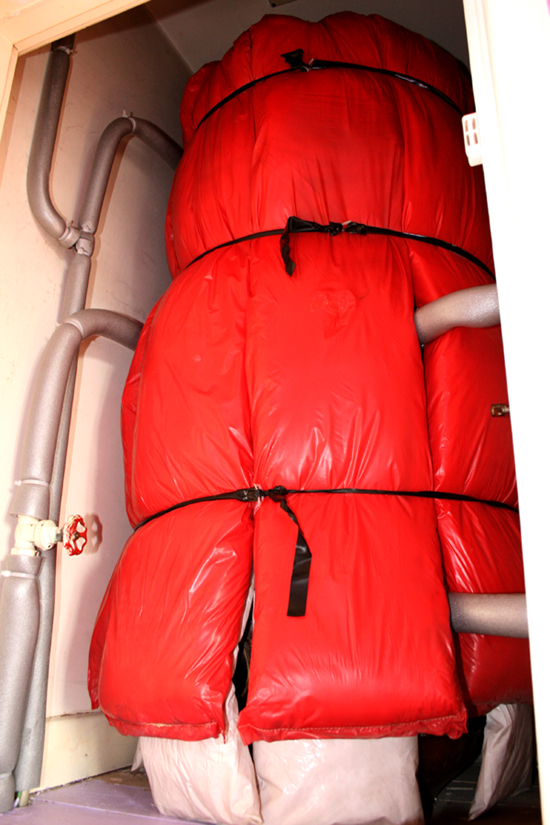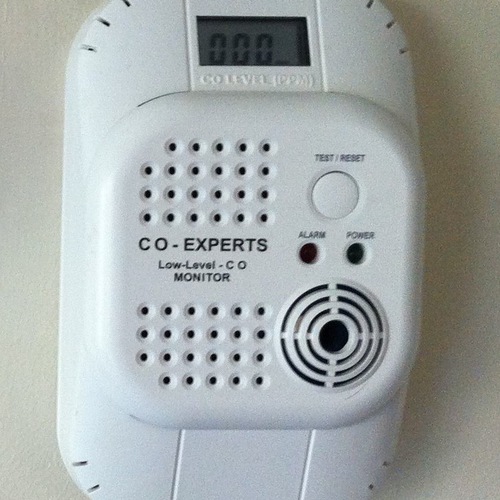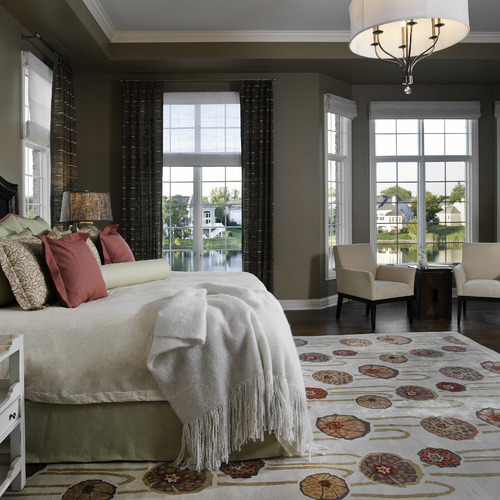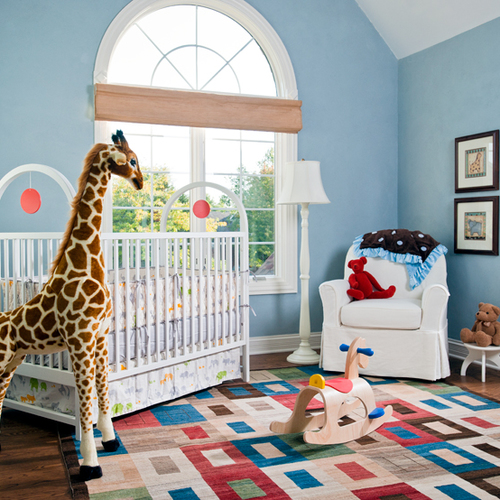
Image Credit: Photo via Flickr
For the past couple of years there has been a lot of conversation in the industry about indoor air quality and the health benefits of home performance upgrades. Even the certification folks have jumped on the bandwagon, offering special certifications for home inspections that focus on health and indoor air quality. There is no question that energy upgrades can improve the indoor environment of a home or building; this has always been one of the non-energy benefits of home performance upgrades. The real question is, does this warrant a change in messaging for the home performance industry? Should we be driving the industry to focus on promoting health benefits as a way to stimulate growth and potentially spur market transformation?
To be honest I have my doubts. Here’s why.
Every couple of years we hear about something just around the corner that is going to create huge consumer demand that will push the home performance industry to the next level. These trends start with great enthusiasm but are often followed by not-so-great results.
For example, in the early part of the new millennium, Home Performance with Energy Star was the hot ticket. The intentions were good; the results were mixed. Then came Energy Upgrade California, backed by huge dollars from the American Reinvest and Recovery Act (ARRA). If only it achieved what it could have. Then it was the Home Star legislation, affectionately known as Cash For Caulkers. That slowly faded away.
More recently it’s been financial tools such as Property Accessed Clean Energy (PACE) and now the Residential Energy Efficiency Loan (REEL) program from the California state treasuries office. No doubt each of these have had positive impacts. There is no question that each of these initiatives has helped the industry grow. Unfortunately, none has matched the hype or created true market transformation. Some people have called energy efficiency “the next frontier,” comparing it to where solar PV about 15 years ago. Yet we are still struggling to survive as an industry.
I hate to rain on the parade, but I personally believe the current trend of focusing on the health benefits of home performance upgrades will not create huge demand in the industry or drive it to real market transformation, no matter how much we will it to happen.
Approaching health and home performance
There are two ways to approach health and home performance. The first is to identify potential air quality and other concerns as part of a traditional energy audit, which makes a lot of sense. The other is to seek out health concerns as opportunities on their own — an approach that I think is risky.
Of course, it’s not uncommon to find issues in homes that are most certainly making people less healthy or potentially sick. I think most of us would agree that fixing a broken sewer line to keep wastewater from pooling under a home will improve the indoor air quality. The same holds true for fixing the shower drain the plumbers forgot to attach, leaving nowhere for the water to go except into the crawl space.
Even more common is the furnace plenum that rusts out and makes a nice warm home for critters because it’s in contact with the dirt in a crawl space. I have seen several of these that are covered in rodent feces and other not-so-nice things which then get blown into homes when the HVAC system is operating. Then there’s the brand new gas stove that had a defective burner and was producing dangerous levels of carbon monoxide, making the whole family sick when mom prepared dinner.
Each of these examples are things we’ve encountered while preforming energy audits. I think most people would agree that fixing these problems goes a long way toward improving indoor air quality and the health of the occupants of those buildings. In this capacity, I think health has real value and is a huge positive for the home performance industry.
What troubles me is the idea of using health concerns as the primary driver to promote and sell home performance. There’s no question that you can sell jobs based on improving indoor air quality, which directly affects health. I can tell you from experience these jobs can be very lucrative — and that you can lose your shirt on them, too.
Don’t create unrealistic expectations
The problem is, when you present yourself as someone who can fix long-term health problems, you are entering a land of questionable promises and huge expectations. That’s not to say that you can’t improve conditions, but I would caution home performance contractors against creating an unrealistic sense of what they can accomplish. Often the folks who look to home performance as a cure for their health concerns are very difficult clients who have expectations that are impossible to meet.
Early on in my home performance training I was always told to use phrases like “improved indoor air quality” and making homes “healthier” vs. fixing a home that’s making you sick. This is good advice. When someone is sick and believes that their home is the cause, their expectations of your ability to fix everything are very high. If you promote your ability to fix sick homes, you’d better be able to deliver.
What happens after your customer spends tens of thousands of dollars on an upgrade and still believes the house is making them sick? Do you go back and try additional solutions? If so, who pays for it? Is it “warranty” work or a change order? I can guarantee you there are some people who will never be satisfied with your results, no matter how hard you try.
Do low-cost particulate monitors really help?
I suspect the recent advent of low-cost particulate monitors might have something to do with this new trend toward health. For a couple of hundred dollars you can now get a device in your home that will provide data on what is in your home and how it might affect your indoor air quality and therefore your health. Previously, instruments to do this cost in the tens of thousands of dollars. Now you can have Amazon deliver one right to your door for under $300. The problem is, how well do they really work? And which particulates are actually contributing to your health concerns?
There are as many kinds of health concerns as there are types of people in the world. I have seen home performance improvements be very effective. In my experience, fixing leaky ducts and air sealing crawlspaces and attics can be very beneficial for the health of the occupants. I have many positive anecdotal stories about huge improvements in the health of asthma sufferers, and of people not needing to use their allergy medications anymore after we fixed their homes.
About the other side of health
I also have a few horror stories, such as the “super smeller.” A super smeller is someone who has an extremely heightened sense of smell. At first I thought the idea was a bit exaggerated, but I assure you these people do exist. In our case, we were very cautious, providing material data safety sheets (MSDS) on everything we used in her house. We also provided physical samples of all of our materials prior to installation — the ductwork, the insulation, the mastic — you name it, she approved it all before we used it. She forbid the use of any kind of spray foam, so we ordered special IAQ (read: expensive) mastic. We air sealed her attic with mastic instead of gun foam, which was not fun.
We installed a new furnace and ducts and completely air sealed her home. When the work was complete, she was convinced that something we used was giving her headaches. We went back, and back again, using a blower door to isolate the source of the odors. Eventually we went so far as to install mechanical ventilation, complete with filtered supply, at our expense. No matter how hard we tried, she still suspected that our work was making her feel worse.
So where do you draw the line and how do you move on? In this case, having a relationship with an indoor air hygienist who could do some in-place air sampling and monitoring would be a good idea. Measure the results and deal with facts. The problem is, air hygienists are expensive, so who pays for it?
Stories with sad endings
Some health-focused jobs can have sad endings. We worked with a Multiple Chemical Sensitivity client (MCS). He hired us to air seal his home and install a mechanical ventilation system. He was a referral from an indoor air quality specialist (hygienist). At some point in his life, he had been exposed to chemicals that altered his natural ability to process smells. Honestly I felt bad for him. He had moved out of his home and had to live elsewhere after a contractor used an epoxy finish on his outside front deck. It seems the epoxy was not mixed properly, and the off-gassing set off his immune response, giving him migraines.
He evacuated the house for nearly three years. During this period, he replaced his forced air heating system with a boiler and radiators to eliminate ductwork and made other improvements to the home. When we came on, we air sealed the entire home (again with mastic and no gun foam), insulated the attic and installed a heat recovery ventilator (HRV) that included a MERV 12 pre-filter. We had to put the intake for the HRV in a specific location so that the neighbor’s stinky laundry detergent would not be an issue. We installed an indoor control for the HRV so he could shut it off if there was an unwanted pollutant outside.
He was very happy with the work. After waiting two months for everything to off-gas, he moved back into the home. All seemed well and good. When I spoke to him a couple of years later, he was still very happy with the work we did, but also still had some issues with headaches and other health problems. Although we made significant improvements, his home was still presenting problems for him.
Home performance can improve many homes
Over the years, our work has improved many homes, including making them healthier. But not all of our jobs were 100% successful. It’s not a good feeling when you set out to help someone with their health concerns and come up a bit short. This is why I am apprehensive about the trend toward health as a new driver for home performance upgrades. It’s great when you get it right; it sucks when you don’t.
My advice: leave fixing health issues to doctors and other health professionals and concentrate on promoting the other benefits of home performance upgrades.
I would love to hear your feedback and experiences regarding health and home performance. Please share by describing your experience in the comments section below.
Charles Cormany is the executive director of Efficiency First California, where this blog originally appeared.
Weekly Newsletter
Get building science and energy efficiency advice, plus special offers, in your inbox.















7 Comments
When builders give health advice
This article is important. I agree with the author, Charles Cormany: "The problem is, when you present yourself as someone who can fix long-term health problems, you are entering a land of questionable promises and huge expectations. That’s not to say that you can’t improve conditions, but I would caution home performance contractors against creating an unrealistic sense of what they can accomplish."
I would probably go further: Builders should not give health advice. If clients want health advice, refer them to a doctor. Builders should not make any health claims for their buildings -- because, without any evidence to back up their claims, their claims could be seen as fraudulent.
I've written about these topics before; see the links in the "Related Articles" sidebar. I noted in my 2016 article, Indoor Microbes and Human Health, "I'll repeat my usual advice to builders: It’s unwise to make any health claims about the homes you build. No one really knows how to build a healthy house."
In Cormany's article, I was particularly interested in the story about the client described as a "super smeller." Cormany wrote, "No matter how hard we tried, she still suspected that our work was making her feel worse." For more on this topic, see Helping People With Multiple Chemical Sensitivity.
Health vs Comfort
Great article Charles. I commend you for taking on the challenging work of home performance improvement. One comment I have is to market comfort rather than health. Identifying what makes someone uncomfortable (hot and cold spots, drafts, humidity problems, mold, etc) may be an easier sell - something that once people acknowledge is a problem they will likely be willing to pay for a solution.
On the subject of low cost air quality monitors, I just saw a good presentation on the subject at EEBA. Lawrence Berkley Labs tested several against high cost/high quality equipment and several of them did a good job. The presentation is not yet on the EEBA site, hopefully it will be soon.
Air quality meters
I have a Dylos DC1700 particle counter at home that I picked up a while back for woodworking. Very useful for things like being able to have quantitative measurements of how well dust collection systems are working.
The big caveat is that although it can tell you how many small particles are in the air, you still don't know what they are.
Worth pointing out that even if we don't know how to build a healthy house, we certainly know of ways to build an unhealthy one. I'm amazed by the lack of concern most contractors have for the dangers of exposure to fine dust that they generate.
Efficiency first, health last? I hope not....
It's unfortunate that a lot of buildings are less healthy than they could be or should be--they might have mold, or radon, or be made with products containing chemicals like lead (in paint), asbestos (in insulation, siding, roofing), formaldehyde (in adhesives and insulation), PBDE flame retardants (in spray foam), pthalates (as a plasticizer in vinyl products), dioxin (in wire insulation), chromium arsenate (pressure treated lumber) and so on. These materials can be hazardous for occupants, and even more hazardous for those who work around them day in and day out. I talk about this with clients whenever I have an opportunity, because I think that if consumers know more they will make better decisions. Some people decide they don't want foam and opt for cellulose, some are willing to live with the chemistry. Some people decide they are fine with PEX pipes for potable water, some want copper.
Granted, health is complicated, so it's sometimes hard to state cause and effect, and plenty of this is in people's heads. But we know that children who grow up in unhealthy buildings cost more to educate. We know that people who live in unhealthy buildings have higher health care costs. We know that the lead in paint that we stopped using in the 1970s still costs our society billions a year. We know that firemen have unnaturally high rates of cancer.
I don't see a rash of green builders and manufactures who prey on consumers, or who use fear and false promises about health to up-sell their work, or who make irresponsible promises. I do see leading advocacy groups engaged in green-washing and faux sustainability, for example by choosing to align themselves with the interests of corporations and by focusing on “sustainable markets” and “stimulating growth” while carefully distancing themselves from what should be a primary concern—the health of their worker members and of building occupants.
This is the golden age of building science, and we know how to make great buildings. Why shouldn't we talk about that as much as possible?
Response to Bennett Sandler
Bennett,
Lead paint and most types of asbestos insulation were removed from the market (at least for residential uses) decades ago.
Federal legislation enacted in 2010 established new lower limits for permissible formaldehyde emissions from composite wood products (including hardwood plywood, medium-density fiberboard, and particleboard). Since this legislation (the Formaldehyde Standards for Composite Wood Products Act) was passed, health risks associated with cabinets and furniture made from these composite wood products have been greatly reduced.
I certainly agree with you that radon risks should be addressed by green builders. GBA promotes measures designed to reduce radon risks: All About Radon.
Concerning some of the other substances you list -- for example, dioxin in wire insulation -- the presence of small quantities of a worrisome substance in insulation behind your drywall is not the same as a health risk. There may be justified reasons for trying to remove dioxin from wire insulation -- for example, out of fears that the dioxin may enter the environment when the house is demolished -- but telling homeowners that the wire insulation may be dangerous to their health falls into the category of unsubstantiated claims.
You cite studies about the effects of "unhealthy buildings." For example, your wrote that "we know that children who grow up in unhealthy buildings cost more to educate." I'd be interested to know how the researchers defined "unhealthy buildings," since there is so much uncertainty in this field. I'm guessing that the buildings in question don't resemble new construction, and are therefore irrelevant to any claims being made by green builders.
Some of your cited research -- "We know that firemen have unnaturally high rates of cancer" -- seems almost comically irrelevant.
Your last two sentences contain claims and a plea: "This is the golden age of building science, and we know how to make great buildings. Why shouldn't we talk about that as much as possible?" It's true that we know how to make great buildings. However, we don't yet know how to make healthy buildings. GBA strives to provide up-to-date information on the intersection of building specifications and occupant health, because the issue matters. At this point, I don't think it's wise for builders to make health claims for their buildings, especially when talking to potential homeowners.
This reminds me of smoking and cancer....
For decades the tobacco industry managed to convince the public that we just didn't know for sure that smoking causes cancer. Same thing with fossil fuel and climate. Money talks. I think that's what's happening here.
If there is actually a problem at the intersection of sustainable building and human health it's most likely this contradiction: a lot of the materials being manufactured and marketed by large corporations as energy efficient are not benign from the standpoint of health and environment, and many are likely a step backwards from the more traditional natural materials our great grandparents built with. I see this as a kind of corruption: the health of workers and the health of building occupants and the downstream life cycle risks of materials get treated as an incidental issues. It's as if buildings aren't actually built for people, but for some other purpose. Since media forums like this one are paid for by ad revenue from these corporations.... right, we all have to be very careful talking about buildings and health.
I don't understand why the question of what happens when a building catches fire is "comically irrelevant" to a green building forum.
I'd define a health building as one that does not externalize life cycle costs--it shouldn't harm the health of people who live in it, it shouldn't poison the neighborhood if it burns, and it shouldn't poison the ground when it falls in.
My point in listing building toxins, even ones that we all know are no longer produced, was to show that this stuff is still a problem long after manufacturers reluctantly admit there's a problem and change their formulas. Occupants may not have to worry what's in the wall, but workers in this industry have to deal with this stuff every time we work in an old building. And then it goes to the dump, and gets buried, and the containment barrier leaks... If we had a greater focus on building health years ago, we wouldn't have these liabilities now. By continuing to evade the issue of health we perpetuate this cycle of harm far into the future.
If you are saying we should avoid making unfounded quantitative claims about health and buildings, I agree. If you are saying we should not make qualitative claims about the relative health of materials and designs, then I'd disagree and suggest you are advocating a perverse understanding of sustainability.
Response to Bennett Sandler
Bennett,
When public health researchers showed a clear and striking association between cigarette smoking and lung cancer, cigarette manufacturers denied the association and tried to suppress the facts.
If you can show such a clear association between the insulation used on electrical wires and the health of homeowners, of course I would agree that it's essential to remove all of the Romex from our homes. But that link has not been proven.
Understanding that firefighters have higher than usual cancer rates is important, and I strongly support research on reducing health risks to firefighters. But it's also important to remind green builders that they shouldn't confuse the issue of firefighter health and homeowner health.
Log in or create an account to post a comment.
Sign up Log in